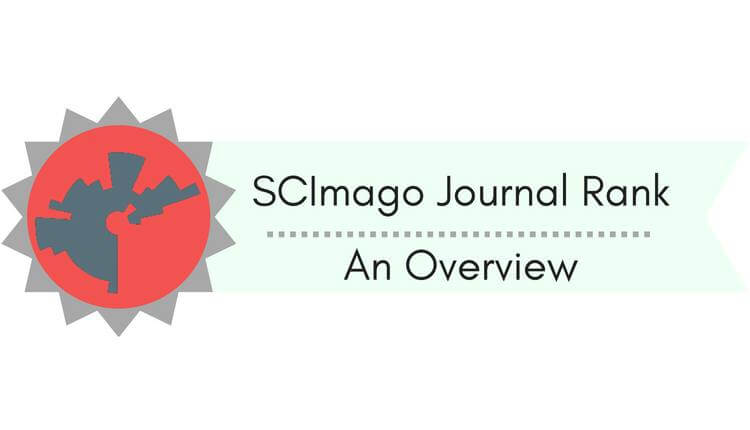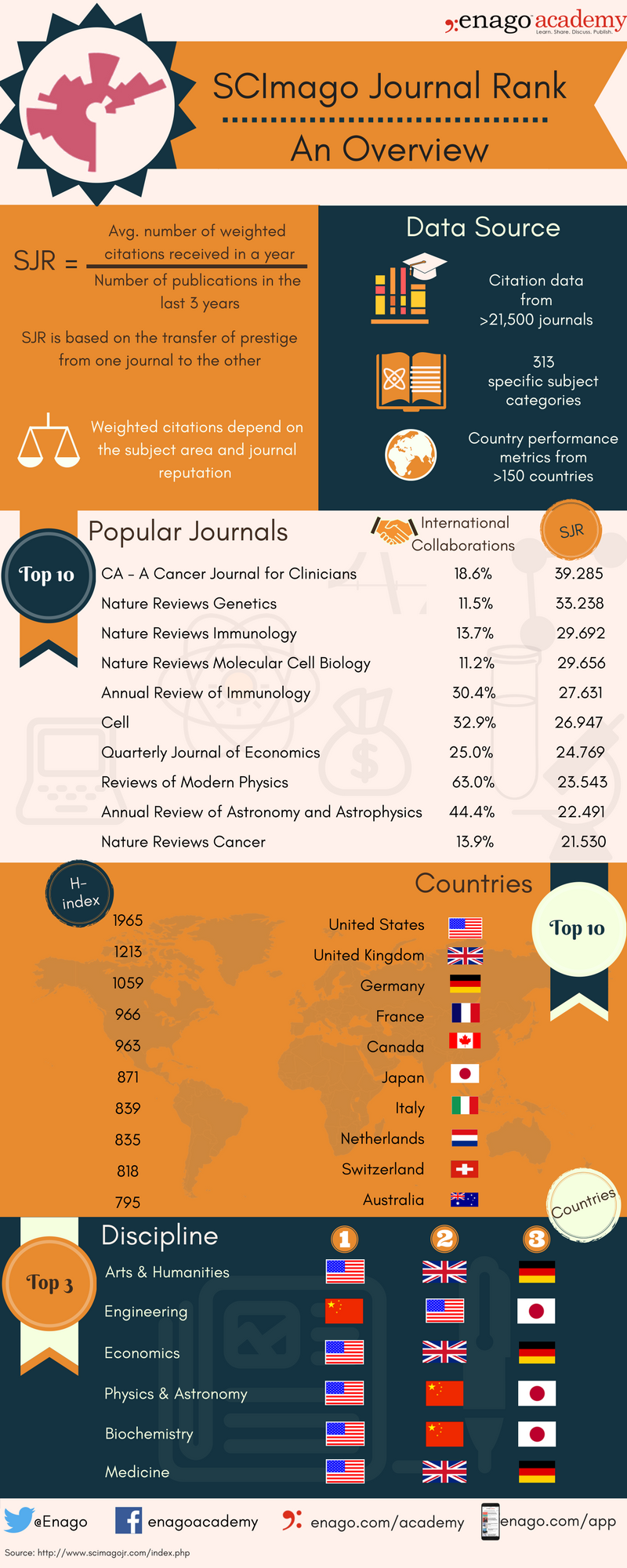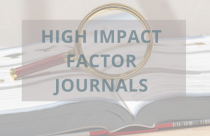SCImago Journal Rank: An Overview

Publishing in high-impact and high-quality peer-reviewed journals not only helps researchers advance their careers, but also increases the visibility of their work and the odds of it getting cited.
Several metrics are used to assess journal quality on the grounds of reputation and influence. Apart from the most commonly used Impact Factor, researchers often refer to SCImago Journal Rank or SJR to choose an appropriate journal in their field of research. Developed by SCImago using the Google PageRank™ algorithm, SJR retrieves information for various indicators from the Scopus database. It provides an ‘open access’ web-based environment to view the rank/performance of journals and countries in various scientific domains.
Although SJR is an alternative to traditional metrics, it does have certain limitations. These include gaps in the coverage of journals and errors in assigning published documents in Scopus.
In this infographic, we discuss journal and country ranks, citation data, and the basis of the SJR calculation.










